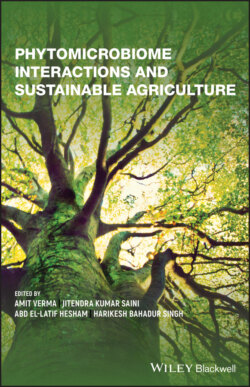Читать книгу Phytomicrobiome Interactions and Sustainable Agriculture - Группа авторов - Страница 26
2.4.2 Non‐Gel Protein Separation Techniques
ОглавлениеA non‐gel separation technique is usotope coded affinity tag (ICAT) is in principle used to compare the two protein‐separated samples. It consists of a tag having one biotin group containing an isotope‐coded linker, which forms the heavy and light sections of a tag while the other group is a thiol. This technique is conveniently utilized in the integral membrane protein identification (Gygi et al. 1999). Isobaric tagging of relative and absolute quantification of protein (iTRAQ) uses the N terminus of the peptide chain along with the side chain which is tagged by the isobaric‐labeled tags. Within a given sample, this technique permits quantification (relative and absolute) of peptides from varied sources all at once (Ross et al. 2004).
Another non‐gel technique is SILAC (stable isotope labeling by amino acid in cell culture). In this, the cell population consisting of protein of interest is cultivated in either N14‐ or N15‐containing cell medium. Cellular proteins are lysed, fractionated, and separated using 2DE. The role of N15 in this technique causes a shift and creates two peaks for each peptide. The ratio of intensities of peaks is substantially indicative of the amount of expression of proteins (Oda et al. 1999; Ong et al. 2002). SILAC is sensitive to the detection of the smallest of changes that may occur in a protein thus making this technique precise and a reliable method for quantification within MS. There is a relative assessment of the protein with the slightest change (Blagoev et al. 2004). Mud PIT (multidimensional protein identification technique) is another non‐gel–based method which utilizes principles of chromatography to separate the protein are directly associated to tandem mass spectrometry (Washburn et al. 2001; Wolters et al. 2001; McDonald et al. 2002). Quantification of protein is enabled by analysis through mass spectrometry. Upon retrieval of masses of proteins, a comparative of absolute masses is established using bioinformatics tools and computer programs such as OMSSA, MASCOT, and Phenyx (Ross et al. 2004). The path followed using these approaches for the detection of phytomicrobiome relationships is outlined in Figure 2.1.
Figure 2.1 A schematic flowchart of proteomic approaches for phytomicrobiome analysis.
